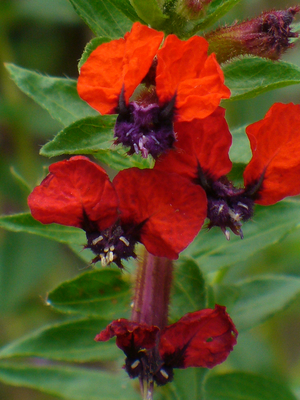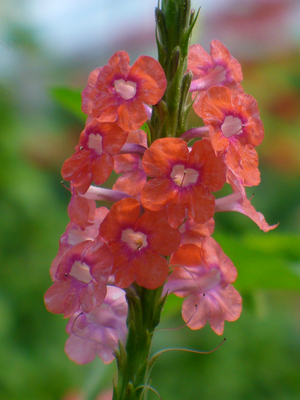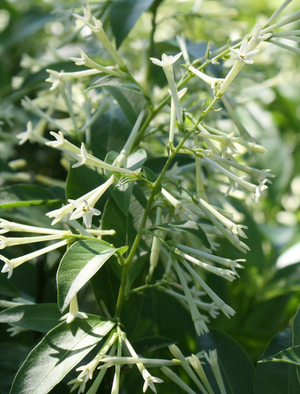Read Reviews
Write Review | Product Details
Yes!
(10/11/2023)


Ty so much from zone 9b! Bradenton, Fl
Just got this from our annual UF agriculture sale! Excited
Just got this from our annual UF agriculture sale! Excited
Perfect for shady tropical-themed garden
(3/21/2019)


no reviews so I figured I’d write one:
As a hummingbird gardener, I grow many South&Central American salvias and this is one of my favorites. Mine are under a bunch of old full-size crape myrtles on my south-facing side yard and they are definitely a shade plant (direct sun causes stress symptoms if temps are above 70 F).
Don’t expect flower coverage to be high as it is a shade plant but the flowers themselves are a very vibrant warm red and occur over a long period (late March to late November for me in North Florida). The common Tropical sage/Salvia coccinea has a similar flower color but this plant has a far superior habit in shade, much better branching.
I’m a hands off gardener; I don’t water this plant nor fertilize it (and I do not use pesticides anywhere in the yard). I have not observed any problems with this species and it is VERY easy to root which makes it friendly to us trial-and-error gardeners. Just be sure to give it shade and in Florida avoid overly sandy soil (tip: if St. Augustine turfgrass, the most common kind here, grows well then it is not too sandy otherwise you should blend the soil with compost and in future use raked leaves as mulch to build up soil).
As a hummingbird gardener, I grow many South&Central American salvias and this is one of my favorites. Mine are under a bunch of old full-size crape myrtles on my south-facing side yard and they are definitely a shade plant (direct sun causes stress symptoms if temps are above 70 F).
Don’t expect flower coverage to be high as it is a shade plant but the flowers themselves are a very vibrant warm red and occur over a long period (late March to late November for me in North Florida). The common Tropical sage/Salvia coccinea has a similar flower color but this plant has a far superior habit in shade, much better branching.
I’m a hands off gardener; I don’t water this plant nor fertilize it (and I do not use pesticides anywhere in the yard). I have not observed any problems with this species and it is VERY easy to root which makes it friendly to us trial-and-error gardeners. Just be sure to give it shade and in Florida avoid overly sandy soil (tip: if St. Augustine turfgrass, the most common kind here, grows well then it is not too sandy otherwise you should blend the soil with compost and in future use raked leaves as mulch to build up soil).


-1.JPG)
.JPG)



Bernadette - Fl. USA